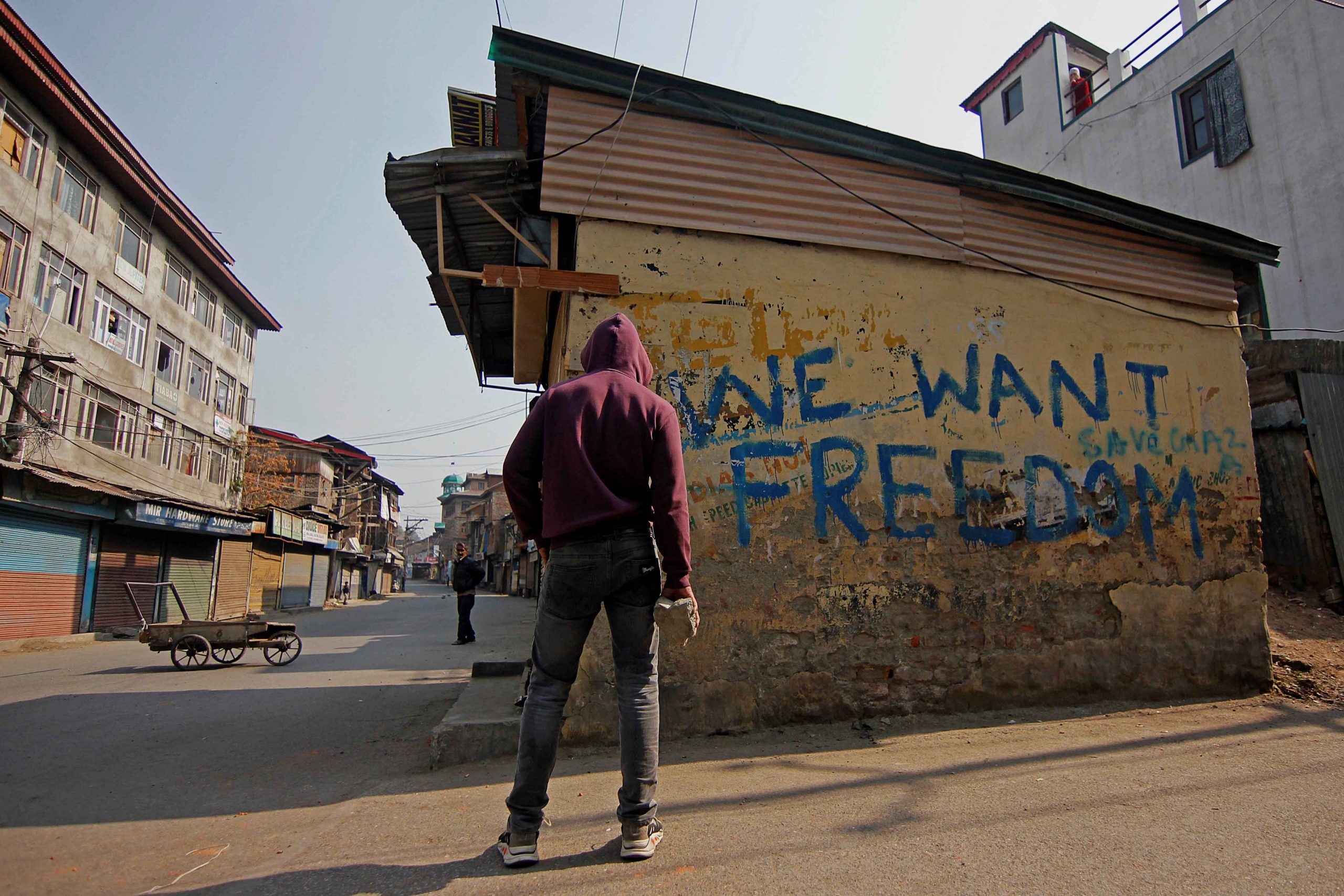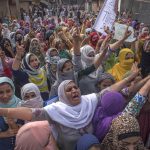Normalcy in Kashmir seems far away
Regular lockdowns of internet communication coupled with discord in Kashmir and government interference in the Indian media doesn’t augur well for the future of the state.
Author:
5 November 2019

The partial restoration of cellphone services in the Indian-controlled state of Kashmir on Monday 14 October has been hailed by the Indian government as a “barometer of returning normalcy”.
If Indian officials are to be believed, all restrictions will be lifted gradually and normal life will resume. After more than 70 days of communications lockdown, in what has been called an “annexation” and a “siege”, these claims sound bizarre.
The first signs, according to the Indian government, appeared when it sought to reopen around 200 primary schools on 19 August. But a Reuters news agency reporter visited several schools and found the classrooms deserted, lending credence to reports of widespread civil disobedience by the people. On 16 September, the Supreme Court of India directed Indian officials to restore normalcy in Kashmir, “keeping in mind national interest and internal security”.
This is neither the first nor the last time that Kashmir will “limp” back to “normalcy”. The word “limp”, often used in parlance with “normalcy” by Indian officials and media, is a stark revelation of the situation. An image of eight million people limping towards an ever-elusive normalcy is indeed pitiful. Seen through the prism of India’s “national interest and internal security”, normalcy takes a purely dystopian form. People are expected to fall in line as if the past did not happen, the present does not exist and, consequently, a just future cannot be.
For Kashmiris, “normalcy” is a temporary cessation of hostilities with the state, which can last from days to months to years. In a conflict zone with a raging mental health crisis, it comes to mean anything other than a normal life. On good days, it is a sense of unease that pervades every aspect of Kashmiri lives. On bad days, Kashmir erupts. Between these two extremes it is, as best described by a local teacher, a “siege of the mind”.
What happens during this period is what proves to be a trigger for the next major eruption, at the heart of which lie seven decades of Kashmiri struggle for the right of self-determination. A blueprint of daily life in the region, before the current crisis precipitated, lays bare the hollowness of the meaning of normalcy as conceived by the Indian government.
Encounter sites
Violence on a day-to-day basis takes the shape of what are called “encounters”. These are standoffs between armed rebels and Indian soldiers. Civilians storm these encounter sites, risking life and limb to help the rebels escape.
More than 100 civilians were killed in such incidents in 2018. Earlier this year, the Indian government announced a twice-a-week highway ban to enable the free movement of military vehicles following a suicide attack on a convoy, which killed at least 40 Indian soldiers. On these days, more than the usual number of soldiers patrolled the length of the highway, the only link between districts. Highway exits were sealed off with concertina mesh to prevent civilian vehicles from approaching. Not even ambulances had access.
Related article:
A legal petition compared this ban to a Nazi government order prohibiting Jews from entering public spaces between 9pm and 5am during the German occupation of Poland in 1939. Before this new ban came into effect in India, civilian traffic was being halted in any case as soon as military convoy movement began. Amid daily violence, civilians were not able to reach hospitals.
In a typical week, Kashmiris protest against Indian rule after Friday prayers. Young men take to the streets shouting slogans against Indian rule. Indian forces crack down on the protesters, who in response engage in stone-throwing battles. These clashes are known to have serious consequences for protesters, ranging from arrests under arbitrary laws such as the Public Safety Act (which entails a suspension of habeas corpus for up to two years) to death or injury from bullets, pellets and tear gas projectiles shot directly at protesters.
How violence is normalised
Violence of this kind is normalised to the point that daily life continues without interruption. Only major episodes put a halt on “normalcy”. The most recent one was the revocation of autonomy.
Relatives of people subjected to enforced disappearances hold a sit-in at a park in Srinagar on the 10th of every month, demanding to know the whereabouts of their missing kin. Government inaction and apathy has turned this peaceful gathering into a ritual. More than 8 000 families have lost loved ones to enforced disappearances at the behest of Indian forces. Many women whose husbands disappeared have chosen to remarry. At least 1 500 continue to wait in a state of limbo and are called “half-widows”. The state is not obliged to speculate about what normalcy entails for these people.
The government stopped placing advertisements in two major newspapers in Kashmir last year. This advertising was the only source of income for these newspapers. Allegedly this decision was taken because the publications did not concur with the state’s point of view all of the time. One of these two dailies, the English-language publication Kashmir Reader, was banned from publishing for three months in 2016 for being “critical of India” and its policies.
Related article:
Harassment and intimidation of journalists is routine. The cases of Aasif Sultan and Kamran Yousuf stand out. Sultan, a local journalist, was picked up by the police from his house in August 2018 and he continues to languish in jail. He was awarded the John Aubuchon Press Freedom Award earlier this year. Yousuf was detained by the National Investigation Agency, India’s top anti-terror body, in 2016 for reporting only on protests and not covering “any government developmental activity”, which according to the agency is “the moral duty of a journalist”.
Internet shutdowns are routine, to the point that India has earned notoriety for the most shutdowns in the world for its record in Kashmir. The 5 August suspension, which continues to this day, is the country’s 51st internet shutdown in 2019 alone. There have been at least 176 shutdowns in the eight years between 2011 and 2019, including one that lasted six months in 2016.
Mobile networks suffer a similar fate twice every year, on 26 January and 15 August, India’s republic and independence days respectively.
Looming war
Divided between the two nuclear-armed neighbours of India and Pakistan, both of which claim the region in its entirety, the threat of war looms large. The two countries have fought three wars over the issue. In 2013, police issued a nuclear attack advisory in a local daily. Matters came to a head in February, when India conducted airstrikes inside Pakistani territory after accusing it of having had a hand in an attack on Indian forces.
Pakistan retaliated by shooting down an Indian fighter plane a few days later, bringing the two countries to the brink of another war. In a recent tweet, Indian Minister of Defence Rajnath Singh hinted that India’s no-first-use nuclear policy may change “depending on circumstances”. Pakistani Prime Minister Imran Khan warned in an opinion piece in The New York Times newspaper last month that, pending a solution to the Kashmir crisis, “two nuclear armed states will get ever closer to a direct military confrontation”.
Even a cursory analysis proves that everyday life in Kashmir is a humiliating experience. The situation has been under international scrutiny after India unilaterally revoked the region’s autonomous status on 5 August. Among other provisions, it prevented Indians from buying land and claiming resident status.
Many Kashmiris fear that India is trying to bring about a demographic change in the region. Add to the indignities of daily life the fear of such a change and normalcy begins to look like another crisis in the making. Unless India recognises Kashmiri aspirations, it remains a distant dream.


